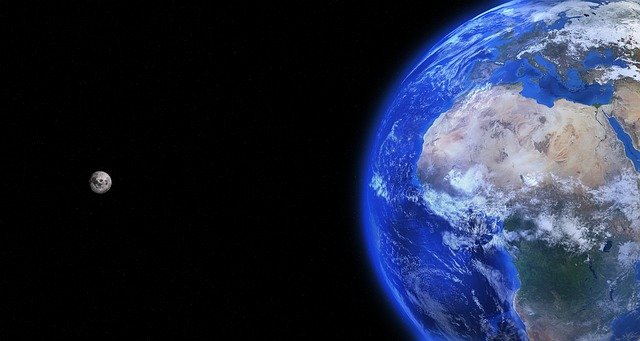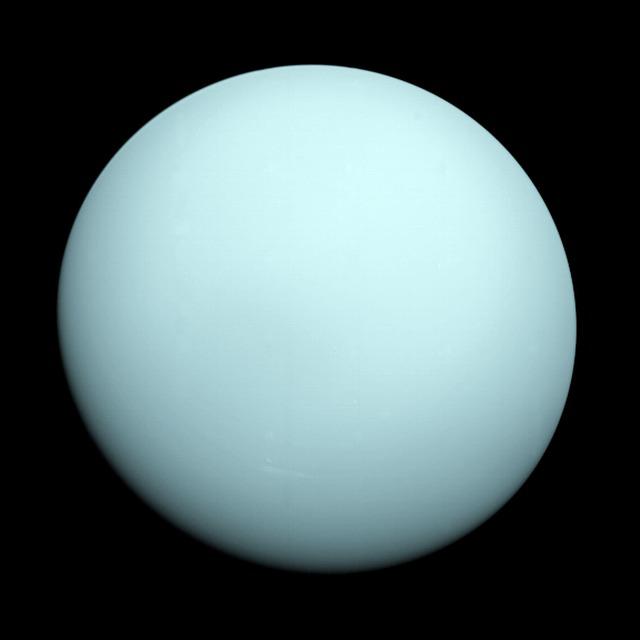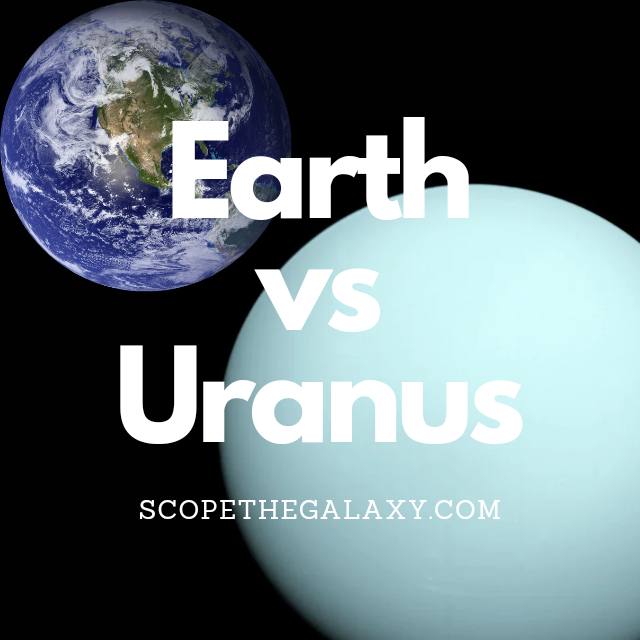*This post may contain affiliate links. This means we may make a commission if you purchase an item using one of our links*
The main differences between Earth and Uranus is that Earth is the 3rd farthest planet from Earth whilst Uranus is 7th, Uranus has an axial tilt of 98 degrees whilst Earth’s is 23.5 degrees, Earth has 1 moon whilst Uranus has 27 and Earth is a terrestrial planet composed mostly of water and rock whereas Uranus is an ice giant made mostly of gasses.
There are numerous other differences between the two so, continue reading if you want a more detailed look at Earth and Uranus below.
What Is The Planet Earth?
Table of Contents

Our home planet Earth is the 3rd farthest planet from the Sun, made up of a mixture of water and solid rock like objects, and is the only entity in our solar system known to allow intelligent life forms like ourselves to exist.
Earth’s distance of 152 million km from the Sun has allowed it to remain within the goldilocks zone and as a result, the planet has been able to thrive for millions of years. It orbits the Sun in a circular pattern, much like all the other planets, has only one natural satellite which would be the Moon and is a terrestrial planet to boot.
In regards to its diameter, Earth is the 5th largest planet with a diameter 12,742km.
Earth’s temperature ranges based on the region you’re located where it can be from as low as -94 degrees Celsius in Antarctica to as high as 50 – 55 degrees Celsius in Tunisia.
As for the planets composition, it consists of the crust, the mantle, the outer core and the inner core, where the inner core is the hottest element within the Earth reaching temperature in excess of 5,200 degrees Celsius.
In regards to some of its most unique features, Earth is around 71% water, has an atmosphere consisting mostly of oxygen and nitrogen that is also made up of 5 main layers, with the highest to lowest being the troposphere, stratosphere, mesosphere, thermosphere and exosphere.
A day on Earth is 24 hours and an orbital cycle around the Sun takes 365 days to complete. It’s axial tilt is more distinct at 23.5 degrees to the right.
What Is The Planet Uranus?

Uranus is the 7th farthest planet from the Sun and the 3rd largest planet in our solar system, coming in at a diameter of 50,724 km. This means that roughly 63 Earth’s could fit inside this ice giant.
In regards to why this cyan blue planet is referred to as an ice giant, it’s down to it’s composition. Uranus is made mostly of methane, ammonia and water with its atmosphere mostly consisting of hydrogen and helium, much like the Sun, and the other giant planets in our solar system.
Due to its distance from the Sun, it takes Uranus 84 years to complete one orbit our central star, whereas it’s axial rotation is much faster than even our Earth at 17 hours per rotation.
As a result of its distance from the Sun, ice based composition and faster rotation levels, Uranus is far from an ideal place to live in let alone have the potential to support life.
Its base temperature is generally a chilling -190 to -200 degrees Celsius and its rocky core, although hot, is still on the cooler side for a large planet sitting around the 5,000 degrees Celsius range.
The planet’s winds are also very fast often hitting 900 km/h, which is roughly twice that of Earth’s most powerful turbulent wind speeds.
In regards to the moons surrounding this cyan planet, we’ve discovered 27 small ones orbiting it. Furthermore, it has 13 rings surrounding it which also means Uranus has the most abundant collection of rings surrounding in our solar system, which is even more than Saturn.
One of the Uranus’ most unique features would include the manner in which it rotates around its axis. As opposed to the slightly angled rotation that the likes of Earth, Saturn and most other planets display, Uranus’ axis is positioned at a 98 degree angle.
What this means is this ice giant completes an axial rotation on its side as opposed to the relatively up straight positioning of most of the other planets in our solar system.
Similarities Between Earth And Uranus
Earth and Uranus don’t have too many similar features but they do have the odd few. These would include the following:
- Both planets orbit the Sun in a circular pattern
- Both have a hotter central core.
- Both are spherical in shape.
- Both have natural satellites orbiting them.
- Both are part of the same solar system
Differences Between Earth And Uranus
- Uranus is an ice giant composed mostly of gases like hydrogen and helium with smaller elements of methane whereas Earth is a terrestrial planet composed mostly of water and land.
- Earth has 1 moon whilst Uranus has 27 moons.
- Uranus is the bigger of two planets where its diameter is 50,724km and Earth’s diameter is 12,742km.
- In regards to temperature Earth averages around, whereas Uranus averages between -190 to -200 degrees Celsius.
- Uranus’ core temperature is 5,000 degrees Celsius whereas Earth’s core temperature is 5,200 degrees Celsius.
- Earth’s mass is 5.972 × 10^24 kg compared to Uranus’ mass of 8.681 × 10^25 kg.
- Uranus isn’t nearly as dense as Earth with a density of 1.27 g/cm³ as opposed to Earth’s that is 5.51 g/cm3.
- Earth has 0 rings whilst Uranus has 14.
- Earth is a mixture of blue, green and brown in color whilst Uranus is a cyan blue color.
- It takes Uranus 84 years to orbit the Sun whilst Earth does so in 365 days.
- It takes Earth 24 hours to complete a day whilst Uranus completes a day in 17 hours.
- Uranus has an axial tilt of 98 degrees whilst Earth has an axial tilt of 23.5 degrees.
- Earth’s magnetic field strength is 0.5 gauss whilst Uranus has a weaker magnetic field of 0.23 gauss.
- Earth’s gravity is 9.807 m/s² whilst Uranus’ gravity is slightly weaker at 8.87 m/s².
Summary
Ultimately the two function very differently from one another whether it be their differences in size, temperature, density and overall composition.
Uranus and Earth may reside in the same solar system but, they operate and function in a significantly different manner from one another which is why one is able to support life and the other, less likely.

